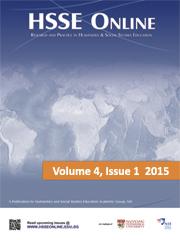
Geography Edition of HSSE
In this special geography issue of HSSE Online, we acknowledge geography teachers’ role in geographical education by inviting classroom practitioners to share their reflections on issues in geography education research. As noted by former Prime Minister Lee Kuan Yew in 1959, “It is no exaggeration to say that the 10,600 teachers in all our schools constitute the most influential group of 10,600 people anywhere in Singapore” (cited by Mr Heng Swee Keat, Minister for Education, at the MOE Promotion and Appointment Ceremony, 2015). What teachers do in their classrooms has profound implications for students’ learning and development.
This collection of articles, though centred around geography education, is largely applicable to a wider humanities education audience as it deals with disciplinary value and purpose, the organisation and prioritisation of curricular content, and teachers’ roles in negotiating these various issues and perspectives. Zainab Banu Hassan’s article applies the curriculum making model advocated by the Geographical Association in the UK as a means to evaluate curriculum resources for developing students’ geographical thinking. Liu Zhen considers the applicability of a conceptual approach to geography as a means to organise geographical content for teaching, while Paul Seah reflects on Young’s (2010) powerful knowledge and the debates within geography education about whether pupils’ experiences should be part of the formal curriculum. Ng Mui Leng’s article examines the debates surrounding whether the study of the earth’s systems sits better within a geography or science curriculum, as well its value in the education of students in Singapore. Finally Peh Shi Yun considers the relationship between teachers’ geographical knowledge and their classroom practice within a wider analysis of other types of powerful influences on what they do.
The final two articles in this issue address issues that have great relevance to geography teachers in their practice. The article by Norfarahin Binte Abdul Rahim and Wu Bing Sheng highlights the importance of disaster education in countries like Taiwan that suffer natural hazards frequently, and assesses the success of disaster prevention literacy in an elementary school. The article also reveals how fieldwork and qualitative and quantitative analyses help geography teachers analyse, interpret, and represent in-situ data. The last article by Adelina Chandra and her colleagues is invited to share their regional study in Southeast Asia. The authors explore impacts of tourist facilities on the transition of Gubugklakah Village, Malang, Indonesia. Their findings reflect how local people benefitted from the growing number of tourists and how the new tourist facilities are geographically expanded along the popular attraction sites. Geography teachers can be inspired by the fusion of qualitative and quantitative analyses in fieldwork study.
Tricia Seow
Bing Sheng Wu
Improving Geographical Thinking in the Classroom with the Curriculum Making Model
Zainab Banu Hassan (River Valley High School, Singapore) Keywords Geography Junior College Secondary School Curriculum Making Artefact Thinking Geographically Introduction This paper examines and evaluates a
Concepts as the Grammar of Geography: A Reflection
Liu Zhen (Loyang Secondary School, Singapore) Keywords Geography Junior College Secondary School Geographical concepts Teaching Geography Thinking Geographically Within geography education, there is discussion about what
Radicalization of Geographical Education in Singapore through Powerful Knowledge and Powerful Pedagogy
Paul Seah (Beatty Secondary School, Singapore) Keywords Geography Junior College Secondary School Geographical Concepts Introduction Johnston and Sidaway (2004) posit that there exists a body of
The “rightful place” of Physical Geography in Singapore’s School Geography Curriculum
Ng Mui Leng (Dunman High School, Singapore) Keywords Geography Junior College Secondary School Physical Geography Education Citizenship Education When the new Lower Secondary Geography Syllabus was
Negotiating the Role of the (Beginning) Teacher in the Classroom
Peh Shi Yun (Innova Junior College, Singapore) Keywords Geography Junior College Secondary School Teachers’ Geographical Knowledge Teachers’ Practice Cultures Of Influence Introduction What is the role
Disaster prevention literacies: Assessing the knowledge, skills and attitude of Taiwanese students for an earthquake disaster
Norfarahin Binte Abdul Rahim (National Institute of Education, Singapore) Bing Sheng Wu (National Institute of Education, Singapore) Keywords Geography Junior College Secondary School Physical Geography Education Introduction
